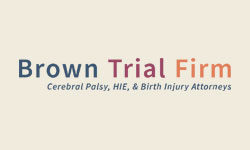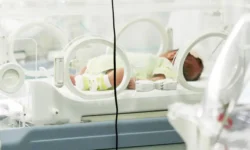Spastic Diplegia Cerebral Palsy
Spastic diplegia is a form of cerebral palsy, a neurological condition permanently affecting coordination and muscular control. “Spastic” means related to or affected with muscle spasms. “Diplegia” means paralysis on both sides of the body of corresponding body parts, typically affecting the legs more than the arms.
Symptoms of spastic diplegia appear during infancy or early childhood. The first indications often occur when the child begins to crawl. Instead of a normal, four-limbed crawling motion, a child with this condition may use the arms in a normal manner but drag the legs behind in a commando crawl.
Spastic Diplegia Symptoms
Symptoms of spastic diplegia and the severity of the condition can vary widely from person to person. This condition causes increased muscle tone, resulting in tight or stiff muscles and spasticity (exaggerated reflexes).
Children with spastic diplegia may have delays in motor development, including rolling over, sitting, and standing. They may walk on their toes, or walk with a scissored gait. Fortunately, although symptoms may change as the child grows older, spastic diplegia does not worsen over time.
A variety of other symptoms can affect people with any form of cerebral palsy, including spastic diplegia. Those symptoms may include:
- Delayed growth;
- Intellectual and learning disabilities;
- Speech and language disorders;
- Impaired vision;
- Hearing loss;
- Spinal abnormalities;
- Osteoarthritis (degenerative joint disease);
- Poor bladder control;
- Seizures; or
- Contractures (shortening and hardening of muscles, tendons, and tissue leading to deformed and rigid joints).
Causes of Spastic Diplegia
Spastic diplegia occurs when there is damage to or abnormal development of the portion of the brain that controls movement. There are different causes of the brain damage or abnormal development leading to spastic diplegia, including:
- Injury before, during, or shortly after birth;
- Severe lack of oxygen to the brain;
- Insufficient blood flow to the brain;
- Maternal infections and fevers;
- Congenital (present from birth) malformations of the brain; and
- Genetic abnormalities.
Certain medical conditions and factors may increase the risk of a child having cerebral palsy and spastic diplegia:
- Maternal infection or high fever during pregnancy;
- Complicated labor and delivery;
- Breech presentation;
- Rh (blood type) incompatibility between mother and child;
- Premature birth;
- Low birth weight (under 5 ½ lbs);
- Maternal thyroid abnormalities, seizures, or excess protein in the urine; and
- Newborn jaundice.
Spastic Diplegia Diagnosis and Treatment
Spastic diplegia cerebral palsy is diagnosed based on characteristic symptoms of the condition. However, diagnostic testing may be performed to rule out other possible conditions with similar symptoms. The child’s physician may order:
- Blood tests;
- Head CT scan;
- MRI of the head;
- Electroencephalogram (a measurement and recording of electrical activity in the brain); and
- Electromyography (recording of electrical activity of muscle tissue with electrodes).
When spastic diplegia has been diagnosed, treatment will vary depending on the symptoms and severity of the condition. Treatment may be required from a number of healthcare providers specializing in different fields, including neurology, physical therapy, and rehabilitation.
Medications may be prescribed to relax stiff or overactive muscles. Orthopedic surgery may be recommended when severe symptoms make walking or moving painful or difficult. Orthotic devices such as leg braces, walkers, or wheelchairs, may be prescribed, along with physical or occupational therapy to help improve independent mobility.
Spastic Diplegia: Concerns of Parents
If your child has been diagnosed with spastic diplegia, you know that the future holds many difficult challenges, and want to give your child every possible advantage. Physical and rehabilitative therapy during childhood, along with the best medical treatment, can have a significant impact on your child when he or she reaches adulthood. Parents of children with spastic diplegia naturally want to provide the best therapeutic and educational options available for their children.
Seeking Compensation for Spastic Diplegia Birth Injuries
When spastic diplegia cerebral palsy is the result of preventable birth injuries caused by medical negligence, the parents of the injured child have a right to seek compensation. A child with this condition will typically require extensive medical treatment, physical therapy, rehabilitation, and occupational therapy in the years ahead. Pursuing compensation from the negligent medical professionals who caused your child’s injuries can help make it possible to provide the quality care your child will need to lead a better life.
At Brown Trial Firm, we represent families who have been victims of birth injury caused by medical negligence. Laura Brown is a patient-safety advocate for mothers and babies, and a Texas birth injury lawyer who has served families in this situation for years. We can provide skilled legal assistance and guidance in your claim to recover compensation for spastic diplegia birth injuries. Call +1 (866) 393-2611 for more information.
Birth Injury Case Results
Oxygen Deprivation During Labor & Delivery Resulting in Brain Damage & Cerebral Palsy
A contingent (%) fee charged on the successful recovery resulted in a fee of $1,441,584 and $33,666.12 in litigation expenses which were reimbursed by the client out of the gross settlement amount.
Oxygen Deprivation During Labor & Delivery Resulting in Brain Injury & Cerebral Palsy
A contingent (%) fee charged on the successful recovery resulted in a fee of $1,300,000 and $81,511.14 in litigation expenses which were reimbursed by the client out of the gross settlement amount.
Note: If any of the cases listed here had been unsuccessful, the law firm would have paid all of the expenses for the case without being reimbursed by the client and would have received $0 dollars in attorney’s fees.
Have questions about a birth injury?
- Cerebral Palsy
- Caput Succedaneum and Cephalohematoma
- Neonatal Intracranial Hemorrhage (Childbirth Brain Bleeds)
- Hydrocephalus (Extra Fluid in the Brain Cavity)
- Cervical Dystonia
- Hemiplegia (Brain or Spinal Cord Injury)
- Hemorrhagic Stroke
- Neonatal Stroke
- HIE
- Periventricular Leukomalacia (PVL) Brain Injury
- Infant Seizures
- Spastic Diplegia (Spasticity in the Legs)
- Top Risks for Birth Injuries
- Fetal Alcohol Syndrome
- Facial Paralysis
- Spinal Cord Injuries
- Bell’s Palsy
- Brachial Plexus Nerves & Erb’s Palsy
- Klumpke’s Palsy
- G-Tubes for Newborns
- Medical Errors
- Cesarean Section & Birth Injury
- Negligence in Brain Cooling Treatment
- Craniosacral Therapy
- Occupational Therapy
- Speech Therapy
- Transition From Pediatric to Adult Healthcare
- Surgical Options for Spastic Cerebral Palsy
- Fetal Intolerance to Labor
- Jaundice (Kernicterus)
- Breech Position
- Placental Complications
- Umbilical Cord Problems
- Uterine Rupture
- Cervical Incompetence (Insufficiency)
- Blighted Ovum
- Necrotizing Enterocolitis (NEC) - Intestinal Inflammation
- Cephalopelvic Disproportion
- Meconium Aspiration Syndrome
- Amniotic Fluid Embolism
- Birth Injury from Premature Delivery
- Developmental Delays
- Abnormal Cord Insertion
- Infections at Birth
- Chorioamnionitis Bacterial Infection
- Premature birth
- Oxygen Deprivation
- Listeria
- Birth-Acquired Herpes
- Placenta Previa
- Placental Abruption
- Mismanaged Fetal Malposition
- Rapid Labor
- Obesity Related Birth Injuries
- Intrauterine Growth Restriction
- Blood Clots During Pregnancy
- Ectopic Pregnancy Misdiagnosis
- Myths & Facts About Birth Injuries
- Bacterial Vaginosis
- Gestational Diabetes
- Maternal Mortality Risk
- Oligohydramnios (Low Amniotic Fluid)
- Infections During Pregnancy
- Excessive Bleeding During Pregnancy
- Congenital Syphilis


